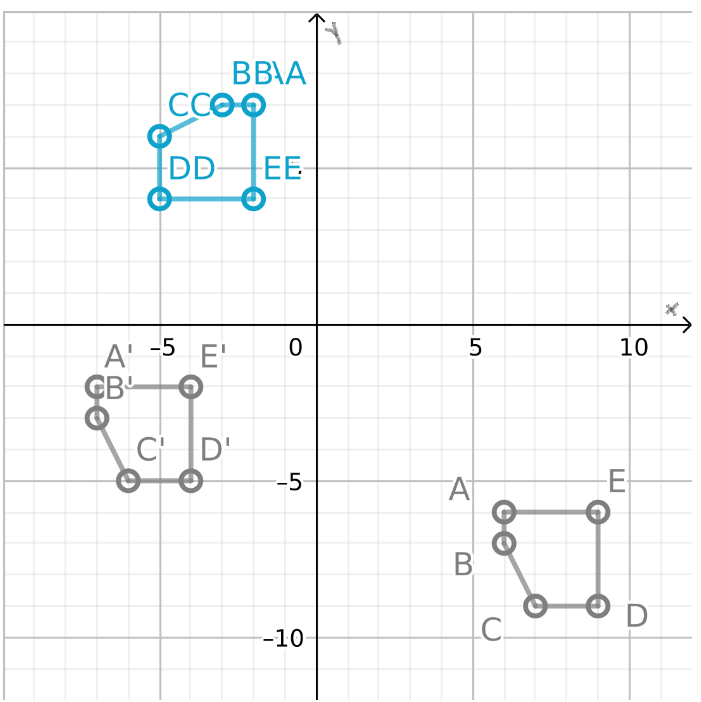Envision Math Grade 8 Volume 1 Chapter 6 Congruence And Similarity
Page 315 Exercise 1 Answer
Given: Graph with two figure.
To find:
How can you map Figure A onto Figure B
To map Figure A onto Figure B, we have to do two transformations:
reflection across the y-axis
reflection across the x-axis
Notice that figures have the same shape and size, but orientation has changed. These are properties of the reflected figures.
Therefore, we can anticipate that there transformation will be reflection.
It is also important to say that is no matter what reflection was before.
Because the resulting picture, after the sequence of transformation, must be the same regardless of the order of transformation.
We can map Figure A onto Figure B using:
reflection across the y−axis.
Reflection across the x−axis.
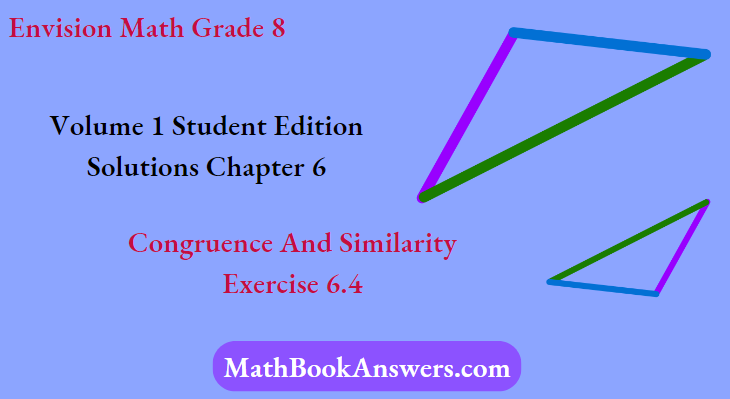
Envision Math Grade 8 Volume 1 Chapter 6.5 Solutions
Page 315 Focus On Math Practices Answer
Given:
Graph for figure A and figure B
To find:
Is there another transformation or sequence of transformations that will map Figure A to figure B?
We can compose transformations by applying a sequence of two or more transformations.
And, if we look at the picture, we can see that we have to do more than one transformation to map Figure A to figure B.
To be precise, we have to:
– reflect the Figure A across the y-axis
– reflect the reflected figure across x-axis
It is important to emphasize that is no matter what transformation was before.
Because the resulting picture, after the sequence of transformation, must be the same
Yes, there is another transformation or sequence of transformations that will map Figure A to Figure B but the resulting picture, after the sequence of transformation, will be the same regardless of the order of transformations.
Page 316 Essential Question Answer
Given:
Graph for figure A and figure B
To find:
How can you use a sequence of transformations to map a preimage to its image?
We can compose transformations by applying a sequence of two or more transformations.
And, if we look at the picture, we can see that we have to do more than one transformation to map Figure A to Figure B.
To be precise, we have to:
reflect the Figure A across the y−axis
reflect the reflected figure across x−axis
It is important to emphasize that is no matter what transformation was before.
Because the resulting picture, after the sequence of transformation, must be the same regardless of the order of transformations.
The resulting picture, after the sequence of transformation, must be the same regardless of the order of transformations.
Congruence And Similarity Envision Math Exercise 6.5 Answers
Page 316 Convince Me Answer
Ava has decided to place the chairs directly across the couch.
She needs to do it by transformation.
We can see that Ava can compose these chairs across the couch by the method of transformation which is called linear transformation.
Finally, Ava can put the chairs across the couch by transformation.
Eva will use linear sequence for the transformation of chairs.
Page 317 Try It Answer
We had given two triangles ABC and A′′B′′C′′.
We need to find the transformation between them.
When two or more transformations are combined to form a new transformation, the result is called a sequence (or a composition) of transformations.
In a sequence of transformations, the first transformation produces an image upon which the second transformation is then performed.
The composition of transformation gives the mapping for the given triangle.
Envision Math Grade 8 Volume 1 Student Edition Solutions Chapter 6 Congruence And Similarity Exercise 6.4 Page 318 Exercise 2 Answer
A preimage is rotated twice to its final position and opposite sign.
To compare the image and pre-image
If you follow is the rule :P(x, y) > 180° rotation
> P′(−x,−y). the negative signs don’t mean to make it negative but to change it to the opposite sign. If it’s positive it goes to negative. And if it’s negative is goes to positive. The rotated image would have the points: (1,2),(4,4),(3,7).
The signs don’t affect the position of the image.
Page 318 Exercise 3 Answer
Given:
A figure ABC, with vertices A(2,1),B(7,4) & C(2,7) is rotated clockwise about the origin, and then reflected across the y axis.
To: Describe another sequence that would result in the same image.
Step formulation: First perform the sequence of operation as given in question and then add another step to reconcile to the original image.
Perform the sequence of operation as given. First90∘
clockwise rotation about origin and then reflect about y
axis.
The sequence is shown below:

Now take the reflection of the last image about y = −x to reconsile to the original image. As shown in the below image:
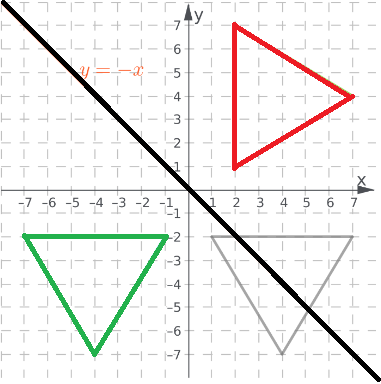
Rotation about origin clockwise 90∘ then reflection in y axis and finally the reflection about y = −x results in the same image.
Page 318 Exercise 4 Answer
Given:

To: Describe the transformation that maps the given figures.
Step formualtion: Take the reflection about the axis and then proceed.
First rotate WXYZ, 90∘ anticlockwise about origin then translate 6 units down to map the figures. The sequence is shown below:

To map the images, WXYZ is rotated 90∘ anticlockwise about origin and then translated 6 units downwards.
Page 318 Exercise 5 Answer
Given:
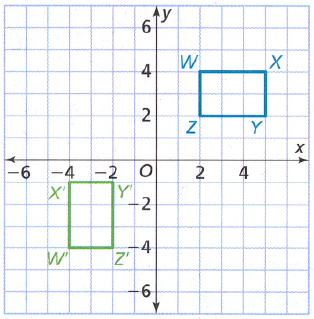
To: Describe the transformation that maps the given figures.
Step formualtion: Translate the figure 6 units down and then proceed.
To map the images, transform WXYZ 6 units down then reflection about y axis, then rotation about (−2,−4) in the clockwise direction for 90∘ and then reflection about x = −2. The sequence is shown in the below figure:
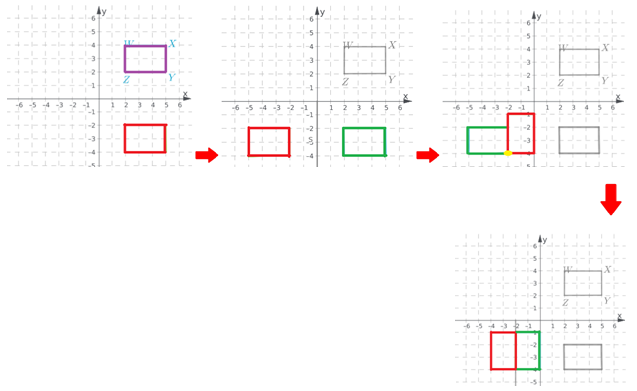
To map the images, transform WXYZ 6 units down then reflection about y axis, then rotation about (−2,−4) in the clockwise direction for 90∘ and then reflection about x = −2.
Envision Math Grade 8 Chapter 6.5 Explained
Page 318 Exercise 6 Answer
Given:

To find:
reflection of rectangle WXYZ
In order to find the reflection of the above we have to refer to the tip mentioned.
Draw a line y = 1
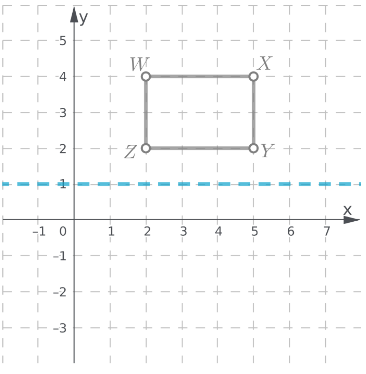
Since the point Z is one point above the line y = 1 the reflected point Z′ will be one point below the line y = 1
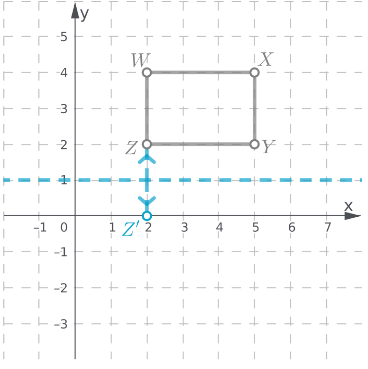
Using the same method, reflect points Y,X and W across the line y = 1 labeling them Y′X′ and W′
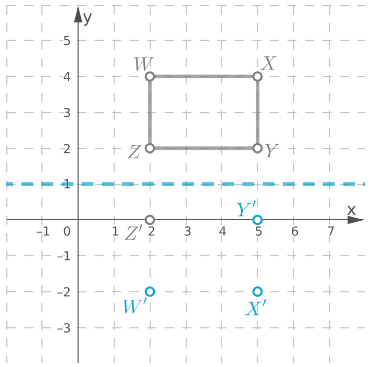
Translate each of the points Z′Y′X′ and W′ one unit right.

Label the translated points with Z′′,Y′′,X′′ and W′′

Connect the points to form a quadrilateral Z′′,Y′′,X′′ and W′′

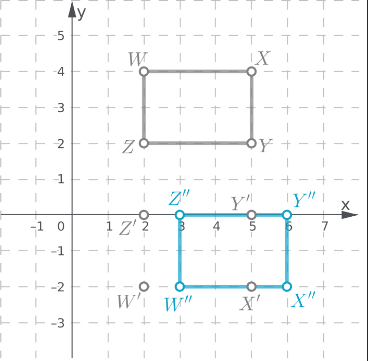
The required image after a reflection across the line y = 1 and a translation 1 unit right is given.
Envision Math Grade 8 Topic 6.5 Congruence Practice Problems
Envision Math Grade 8 Volume 1 Student Edition Solutions Chapter 6 Congruence And Similarity Exercise 6.4 Page 319 Exercise 8 Answer
Given:
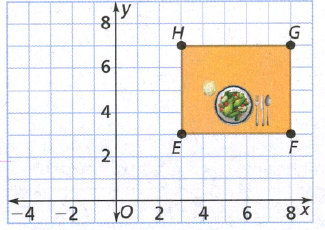
To find:
Location of translation of transformation of the given rectangle.
In order to find the location we have to follow the tip and plot the graph accordingly.
Draw the given rectangle on the graph.

Move all the points 3 units to the left and rename the rectangle as E′F′G′H′
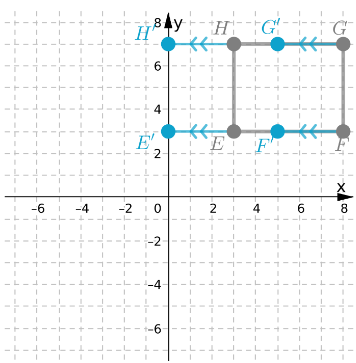
Move all the points 3 units down.
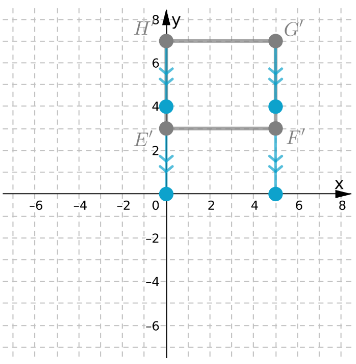
The location of the quadrilateral E′F′G′H′ after two movement is shown
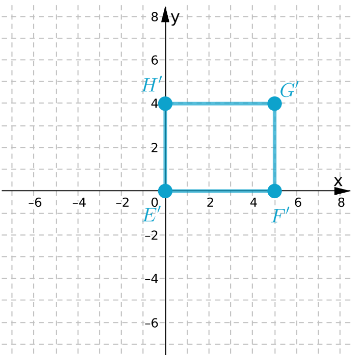
Rotate all the points 90∘ about the origin
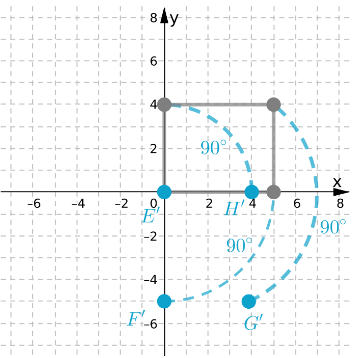
Therefore, the new location of E′F′G′H′ is shown
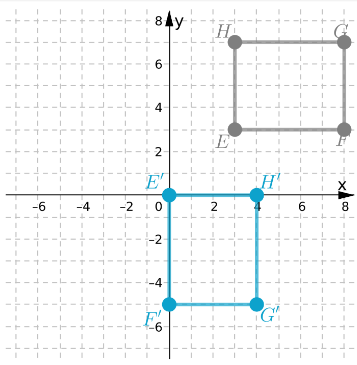
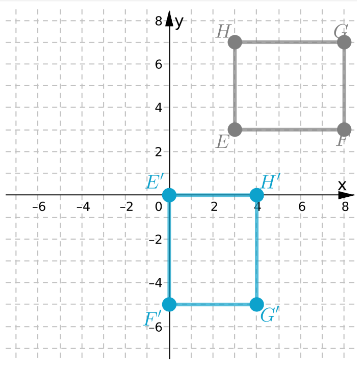
The new location of E′F′G′H′ is shown after 3 units left, 3 units right and 90∘ rotation about the origin.
Solutions For Envision Math Grade 8 Exercise 6.5
Envision Math Grade 8 Volume 1 Student Edition Solutions Chapter 6 Congruence And Similarity Exercise 6.4 Page 319 Exercise 9 Answer
Given :
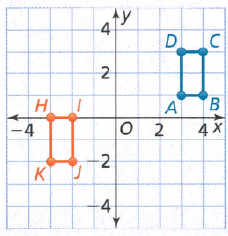
To describe a sequence of transformations that maps quadrilateral ABCD to quadrilateral HIJK.
First reflect the vertices of quadrilateral ABCD
then translate the vertices.
Reflect the vertices of quadrilateral ABCD along the x-axis
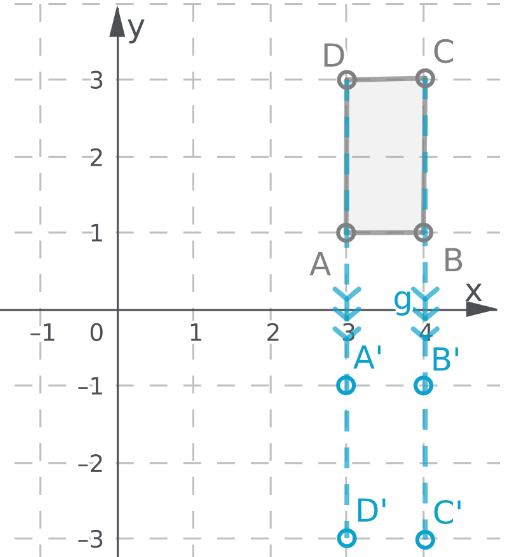
Then translate the vertices 6 units left and 1 unit upward to from quadrilateral HIJK
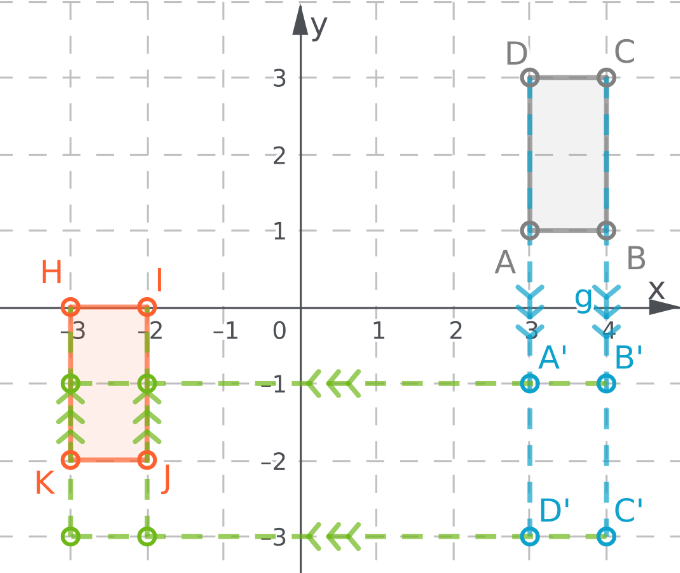
Thus, Reflection along the x-axis followed by the translation of 6 units left and 1 unit up maps the quadrilateral ABCD into the quadrilateral HIJK
Envision Math Grade 8 Chapter 6.5 Lesson Overview
Page 319 Exercise 10 Answer
Given:
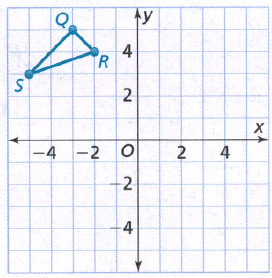
To map △QRS to △Q′R′S′ with a reflection across the y-axis followed by a translation 6 units down.
Translate each of the points 6 units down then label the translated points.
The reflection line is x = 0.
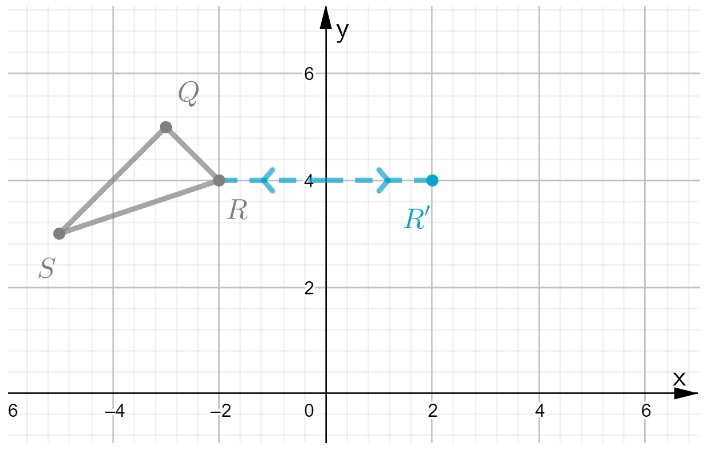
Since the point R is two point left of the line x = 0, the reflected point R′ will be two point right of the line x = 0.
Using the same method, reflect points Q and S across the line x = 0 labeling them Q′,S′.

Translate each of the points Q′,R′,S′ six unit down.
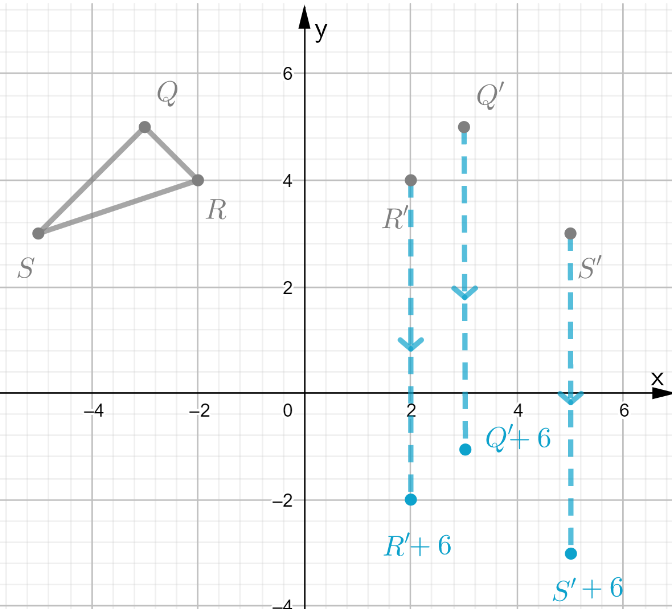
Label the translated points with Q′,R′,S′ and connect them to form a triangle ΔQ′R′S′

Thus, the required image after a reflection across the line x = 0 and a translation 6 unit down is given.
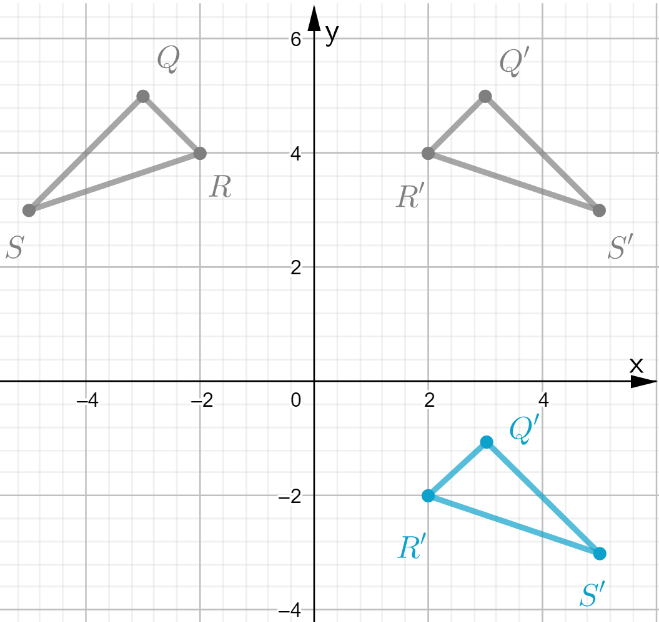
Envision Math Grade 8 Volume 1 Chapter 6.5 Practice Problems
Page 319 Exercise 11 Answer
Given : A student says that he was rearranging furniture at home and he used a glide reflection to move a table with legs from one side of the room to the other.
To explain a glide reflection result in a functioning table
First draw the table image and point A.
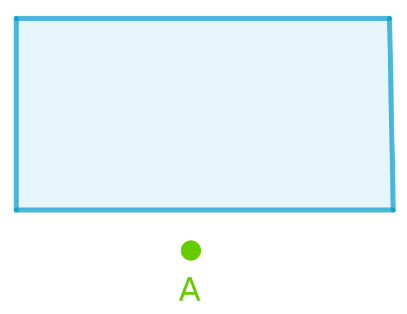
Let the table be as shown and the point A represent the chair.
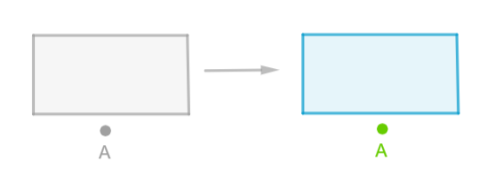
In glide reflection, the table is first translated as shown.
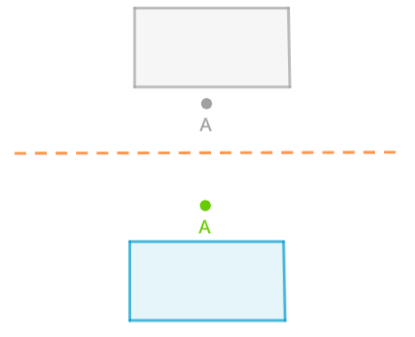
Then, the table is reflected along the line shown.
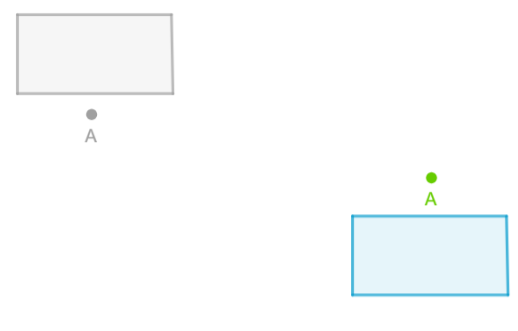
The resulting table after glide reflection is shown. it can be seen that it is a functioning table as the chair A is positioned correctly.
Thus, the resulting table after glide reflection is shown. it can be seen that it is a functioning table as the chair A is positioned correctly.

Envision Math 8th Grade Congruence And Similarity Topic 6.5 Key Concepts
Envision Math Grade 8 Volume 1 Student Edition Solutions Chapter 6 Congruence And Similarity Exercise 6.4 Page 320 Exercise 13 Answer
Given :
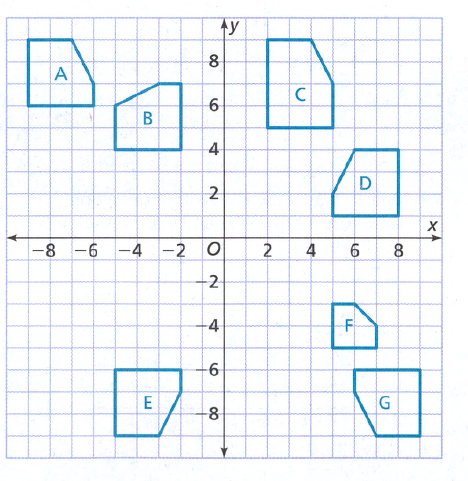
To find which figure is the image of Figure A after a reflection across the x-axis and a translation 4 units right.
Reflect the figure A over the x-axis and translate the reflected figure.
Reflection of Figure A over the x-axis.
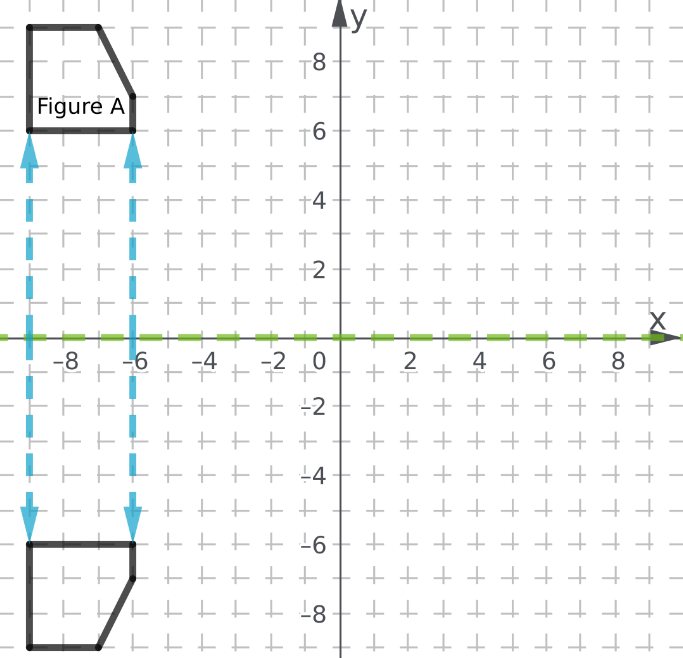
Translate the reflected figure 4 units to the right.
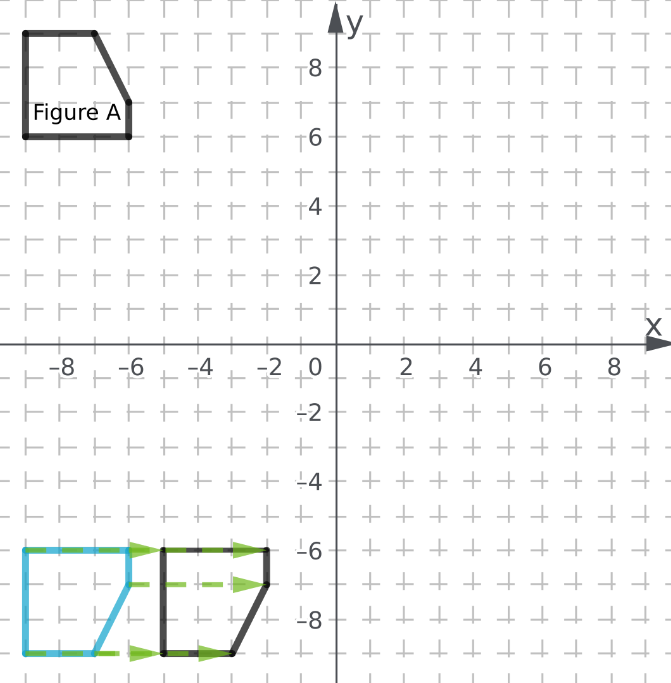
Therefore, the answer is Figure E.
Thus, the answer is letter D which is Figure E.
Given :
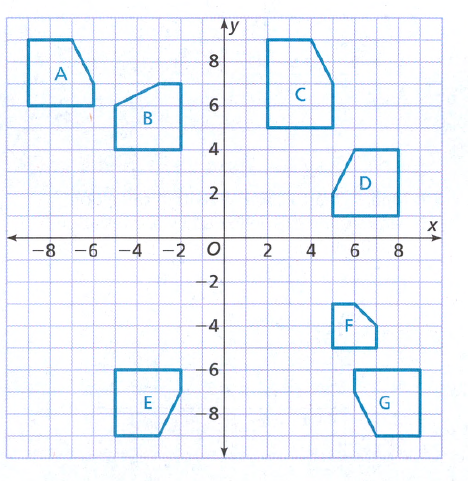
To find figure can be transformed into Figure G after a rotation 90∘ about the origin, then a translation 13 units right and 4 units down.
First move the figure 4 units up and translate the figure then rotate 90∘ about the origin.
In figure G, move the figure 4 units up.
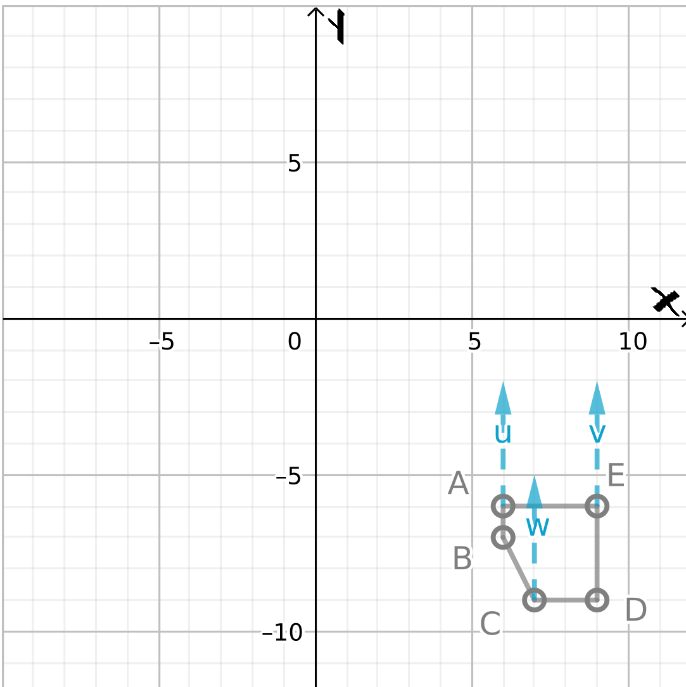
Translate the figure 13 units to the left.
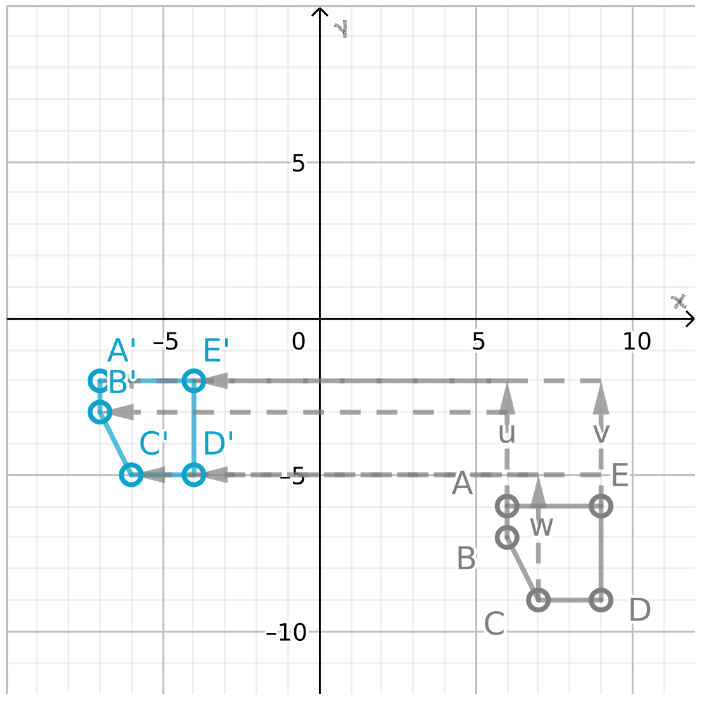
Rotate figure G′ through 90∘ about the origin.
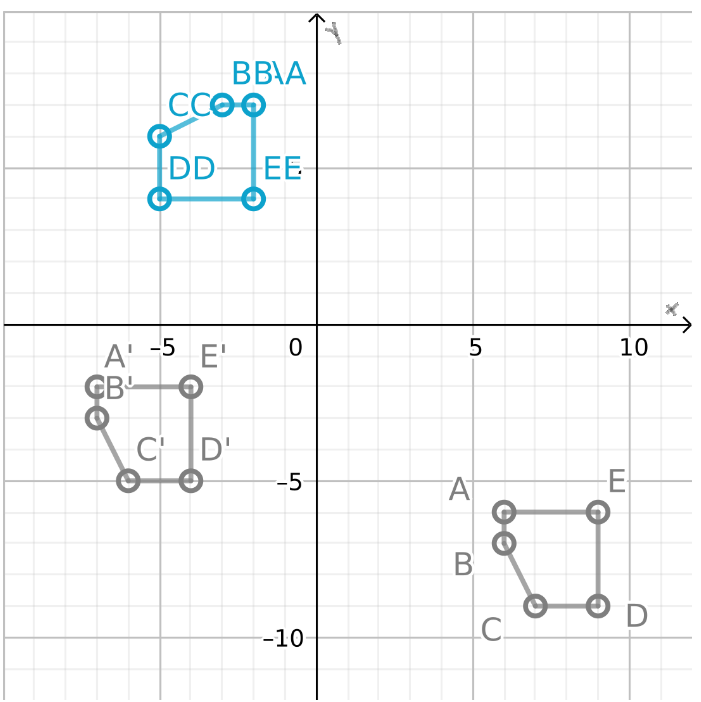
Then the 90∘ rotated figure is similar to figure B.
Therefore, the answer is option A.
Thus, the correct answer is option A.
